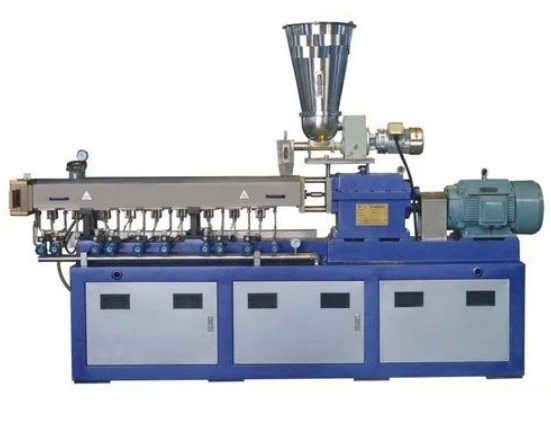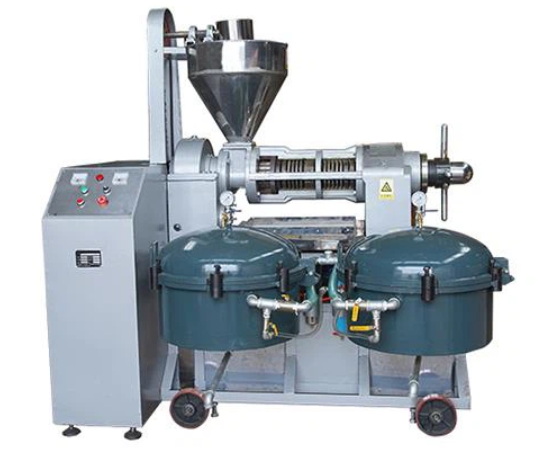Content Menu
● Introduction to Plastic Extrusion
>> Components of Extrusion Machinery
● Applications of Plastic Extrusion
● Benefits of Using Extrusion Machinery and Equipment
● Challenges in Plastic Extrusion
● Advances in Extrusion Technology
● Future of Plastic Extrusion
● Conclusion
● Frequently Asked Questions
>> 1. What are the main components of an extrusion machine?
>> 2. What are the benefits of using plastic extrusion in manufacturing?
>> 3. What are some common applications of plastic extrusion?
>> 4. What are some challenges faced in the plastic extrusion process?
>> 5. How does co-extrusion enhance the plastic extrusion process?
Plastic extrusion is a versatile and widely used manufacturing process that involves transforming raw plastic materials into various shapes and forms. This process is crucial in producing a vast array of products, from simple tubing and profiles to complex components used in industries such as automotive, solar, and medical devices. At the heart of this process are extrusion machinery and equipment, which play a pivotal role in ensuring efficiency, consistency, and cost-effectiveness. In this article, we will delve into how extrusion machinery and equipment contribute to plastic manufacturing, exploring their components, applications, and benefits.

Introduction to Plastic Extrusion
Plastic extrusion is a continuous process where thermoplastic materials are melted and formed into a desired shape by forcing them through a die. This process allows for the creation of products with consistent cross-sections, making it ideal for producing long lengths of materials like pipes, tubing, and profiles.
Components of Extrusion Machinery
A typical extrusion machinery setup includes several key components:
1. Hopper: This is where raw plastic material, usually in pellet form, is loaded. The hopper feeds the material into the barrel of the extruder. The design of the hopper ensures that the material flows smoothly and consistently into the extruder.
2. Barrel: The barrel houses the extruder screw and is equipped with heaters to melt the plastic. It is designed to withstand high pressure and temperatures, ensuring that the plastic is melted uniformly throughout the process.
3. Extruder Screw: This rotating screw carries the plastic pellets from the hopper to the other end of the barrel. Its rotation generates heat through friction to melt the plastic. The screw design can vary depending on the type of plastic being processed and the desired product properties.
4. Heaters: Located along the barrel, these aid the screw in melting the plastic and maintaining the necessary temperature for extrusion. The heaters are typically electric or oil-based and are controlled precisely to ensure consistent temperature conditions.
5. Die: The die gives shape to the molten plastic. It is a customized part of the machine, specifically designed according to the profile of the product to be manufactured. The die's design is critical in determining the final shape and quality of the extruded product.
6. Cooling System: After being shaped by the die, the plastic needs to be cooled and solidified. This system may include fans, water baths, or cooling rollers. The cooling process is crucial in setting the product's dimensions and ensuring it retains its shape.
7. Cutter: This component cuts the newly formed plastic into the required lengths. Depending on the product, the edge may be a simple guillotine or a more complex rotary cutter. The cutting process must be precise to ensure consistent product lengths.
Applications of Plastic Extrusion
Plastic extrusion is widely applied across various industries due to its versatility and efficiency:
1. Solar Industry: Extruded plastics are used in solar panel frames and encapsulation materials, providing lightweight and durable support for solar modules. These materials help protect the panels from environmental stressors while maintaining their structural integrity.
2. Automotive Industry: Extrusions are used for weather seals, gaskets, interior trim components, and vehicle tubing and hoses. These parts offer resistance to chemicals, temperature variations, and UV exposure, ensuring durability and performance over time.
3. Appliance Industry: Extruded plastics are used for gaskets, seals, and handles, providing insulation and sealing properties that enhance energy efficiency. These components also contribute to the aesthetic appeal of appliances by offering smooth, durable surfaces.
4. Construction Industry: Extruded plastics are used in windows, doors, and other architectural elements, offering weather-resistant and thermally efficient profiles. These materials help reduce energy consumption by minimizing heat transfer and providing insulation.
5. Medical Industry: Extrusions are used for tubing, catheters, and other medical device components, utilizing medical-grade plastics to meet regulatory requirements. These materials must be biocompatible and capable of withstanding sterilization processes.
6. Packaging Industry: Extruded plastics are used to produce films, sheets, and other profiles for packaging materials, offering varying thicknesses, barrier properties, and surface finishes. These materials are essential for protecting products during transportation and storage.

Benefits of Using Extrusion Machinery and Equipment
The use of extrusion machinery and equipment offers several benefits:
1. High Production Efficiency: Extrusion allows for continuous, high-speed production, leading to improved efficiency and higher output rates. This is particularly advantageous for large-scale manufacturing operations where speed and volume are critical.
2. Versatility: Extrusion can create a wide range of shapes and sizes, from simple tubing to complex profiles. This versatility makes it suitable for producing both standard and custom products.
3. Consistency: Extrusion generally yields products with consistent cross-sections and quality, ensuring uniformity in every piece produced. This consistency is crucial for meeting precise specifications and maintaining product reliability.
4. Cost-Effectiveness: Due to the high-volume, continuous nature of the process, plastic extrusion is typically more cost-effective than other plastic manufacturing methods. This makes it an attractive option for companies looking to reduce production costs without compromising quality.
5. Material Utilization: Extrusion allows for almost 100% material utilization, as any excess or scrap material can be re-extruded, reducing waste. This not only saves resources but also contributes to more sustainable manufacturing practices.
6. Resilience: Extruded plastics are known for their strength and durability, allowing for the creation of products that can withstand various environmental conditions. This resilience is essential for products that are exposed to harsh conditions or heavy use.
Challenges in Plastic Extrusion
Despite its numerous advantages, plastic extrusion also presents some challenges:
1. Die Swell: This occurs when the plastic expands upon exiting the die, potentially altering the intended dimensions of the product. Die swell can be managed through careful die design and process optimization.
2. Temperature Control: Maintaining a consistent temperature is crucial in plastic extrusion. Variations in temperature can lead to inconsistencies in the product's physical properties, affecting its quality and performance.
3. Material Degradation: Overheating during the extrusion process can lead to material degradation, negatively impacting the quality of the final product. This can result in reduced strength, color changes, or other defects.
4. Equipment Maintenance: The extrusion equipment is subjected to continuous wear and tear due to the high-speed, high-volume nature of the process. Frequent maintenance is required to ensure optimal performance and prevent breakdowns.
5. Recycling Challenges: While extrusion allows for material reuse, the quality of the recycled plastic can degrade after multiple extrusion cycles, affecting the final product's properties. This requires careful management of recycled materials to ensure they meet quality standards.
6. Tooling Costs: The creation of custom dies and tooling for specialized products can be an expensive upfront cost. However, these costs can be justified by the long-term benefits of high-quality, custom products.
Advances in Extrusion Technology
Recent advancements in extrusion machinery and equipment have further enhanced the efficiency and versatility of the process:
1. Co-Extrusion: This technique allows for the simultaneous extrusion of two or more different polymers, enabling the creation of complex products with varying properties such as strength, flexibility, and barrier properties. Co-extrusion is particularly useful in producing multi-layered films and sheets for packaging applications.
2. Nano-Extrusion: This involves the use of nanomaterials to enhance the properties of extruded plastics. Nano-extrusion can improve strength, thermal conductivity, and electrical properties, opening up new applications in fields like electronics and aerospace.
3. 3D Printing Integration: Some extrusion machines are being integrated with 3D printing technology to create complex geometries that cannot be produced through traditional extrusion methods. This integration expands the possibilities for custom product design and rapid prototyping.
4. Sustainable Materials: There is a growing trend towards using sustainable materials in extrusion, such as bioplastics and recycled plastics. These materials reduce environmental impact by minimizing waste and promoting the use of renewable resources.
5. Automation and IoT: Modern extrusion machinery and equipment often incorporate automation and IoT technologies to enhance process control, monitoring, and optimization. These technologies enable real-time adjustments to improve efficiency and product quality.
Future of Plastic Extrusion
As technology continues to evolve, the future of plastic extrusion looks promising. Advances in materials science, machinery design, and automation will likely lead to even more efficient and sustainable manufacturing processes. Additionally, the increasing demand for sustainable products will drive innovation in the use of recycled and biodegradable materials in extrusion.
Conclusion
In conclusion, extrusion machinery and equipment are indispensable in plastic manufacturing, offering high efficiency, versatility, consistency, and cost-effectiveness. These machines enable the production of a wide range of products across various industries, from simple consumer goods to complex industrial components. Despite the challenges associated with plastic extrusion, the benefits far outweigh the drawbacks, making it a preferred method for many manufacturers.

Frequently Asked Questions
1. What are the main components of an extrusion machine?
The main components of an extrusion machine include the hopper, barrel, extruder screw, heaters, die, cooling system, and cutter. Each component plays a crucial role in the extrusion process.
2. What are the benefits of using plastic extrusion in manufacturing?
The benefits include high production efficiency, versatility in product design, consistency in product quality, cost-effectiveness, high material utilization, and the ability to produce durable products.
3. What are some common applications of plastic extrusion?
Plastic extrusion is used in various industries such as solar, automotive, appliances, construction, medical devices, and packaging.
4. What are some challenges faced in the plastic extrusion process?
Challenges include die swell, temperature control issues, material degradation, equipment maintenance, recycling challenges, and high tooling costs.
5. How does co-extrusion enhance the plastic extrusion process?
Co-extrusion allows for the simultaneous extrusion of two or more different polymers, enabling the creation of complex products with varying properties such as strength, flexibility, and barrier properties.






















